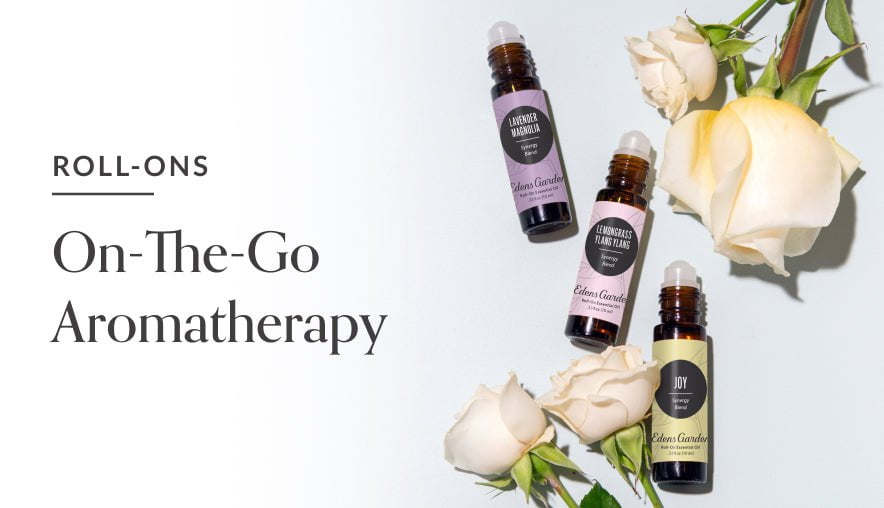Back to Basics: How to Use Carrier Oils

Knowledge is everything when it comes to aromatherapy, so when we hear people asking how do I use a carrier oil? we embrace it! At Edens Garden, we pride ourselves on providing an abundance of essential oil education, from basic to more advanced topics, and today we’re going back to basics. Out of the fundamentals of aromatherapy, comes everything else; so whether carrier oils are new to you or elementary, here’s everything you need to know about how to use a carrier oil.
What are carrier oils?
A carrier oil or base oil, is commonly derived from nuts, seeds, and kernels. Some carrier oils you may be familiar with are oils you may use in cooking, such as olive oil, canola oil, peanut oil and Grapeseed oil. Carrier oils are often obtained by cold pressing- the process of pressing the part of the plant holding the fatty acids without heat. Depending on which fatty acids a carrier oil contains, different carrier oils have unique benefits for the skin.
Different Types of Carrier Oils
-
Jojoba Oil:
Secreted from the seeds of the Jojoba plant, the oils present a waxy, golden color aromatized with a pleasant nutty scent. Jojoba oil is a great skincare supplement if you have acne-prone skin and oily skin and can also be used on your hair for natural hydration. -
Sweet Almond Oil:
Emitting a strong, nutty aroma, sweet almond oil is an edible oil picked from the kernels of almond trees. For external uses, sweet almond oil is well absorbed by the skin therefore it can be used on dry skin, bath oils, and soaps. Avoid using this if you have a nut allergy. -
Olive Oil:
Although people commonly use this in cooking, olive oil can provide a variety of other uses such as aromatherapy, skincare, haircare, and soaps. This oil has a high concentration of oleic acid (omega-9) and brings in a pungent and fruity scent that provides a great kick to start off your mornings. -
Grapeseed Oil:
A zesty and acidic carrier oil made from pressing grape seeds from grape varieties. Grapeseed oil is rich in Vitamin E, an antioxidant, which is a key ingredient to help reduce skin problems such as blemishes and wrinkles, but it also provides great health benefits to help prevent cardiovascular diseases and cancer. -
Coconut Oil:
Coconut oil is a very well-known product for its skin-nourishing properties, which makes it a great oil for massaging, hair products, skin preparations, and as an essential oil. In addition, consuming coconut oil itself can provide amazing health benefits such as lowering cholesterol and are rich in essential fatty acid, copper, and iron. Also, you will notice that coconut oil may turn into a creamy solid while storing at room/ cold temperatures. -
Argan Oil:
Made from secreting the kernels of a fruit that can be found on an argan tree, argan oil is great for different reasons. As it is rich in Vitamins A and E, argan oil can help with hair growth and maintain your hair health by rubbing a couple of drops in your palms and combing it throughout your hair. If you are using it on your skin, then fewer drops would suffice. Just like the sweet almond oil, argan oil also exuberates a nutty aroma but with a pinch of light citrus smell to it.
How to Dilute Carrier Oils
One integral use of carrier oils is diluting essential oils. The constituents which make up essential oils are extremely potent and can be irritating to the skin when applied undiluted, or can cause sensitization over time. Carrier oils are mild and because they blend with essential oils to create a homogenous mixture, they are the perfect diluent for using essential oils topically.
Edens Garden’s experts go in depth on teaching you how to dilute and include dilution charts in this blog post.
How to use carrier oils in skincare
One of the easiest ways to use carrier oils is by simply using them alone to moisturize and nourish the skin. Each carrier oil has unique benefits for the skin, making them beneficial to be used alone on the skin. For example, take two pumps of Rosehip or Camellia Seed and apply to your face and neck at night, replace your moisturizer with Prickly Pear Seed or Sweet Almond, add two tablespoons of Meadowfoam or Guava Seed to your bath, rub Argan or Coconut oil in your palms and apply to wet split ends. There are a multitude of ways to upgrade your daily routine with nourishing carrier oils alone.
Want more carrier oil info? Check out these posts:
5 Reasons Why We Love Avocado Oil
Why You Need Prickly Pear Seed Oil In Your Skin Care Routine
Leave a comment (Comments will be approved before showing up)
2 comments
Rita Schmidt
How do I mix a Carrier Oil with an Essential Oil.. How much of the Essential Oil and how much of the Carrier Oil?




Edens Garden
August 8, 2022 at 8:53 am
Hi Rita! This blog post answers these questions in detail: https://www.edensgarden.com/blogs/news/how-to-dilute-essential-oils-1